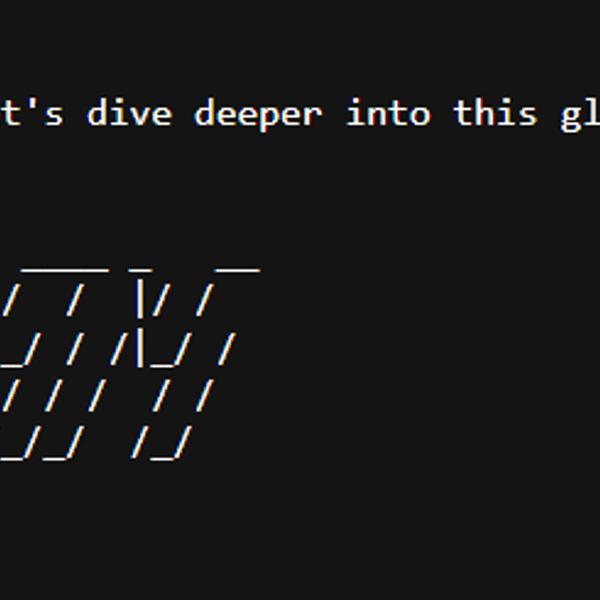đồng tiền pi network là gì: Crypto Explained

đồng tiền pi network là gì: Crypto Explained
The digital currency world is booming with innovation, but few projects have prompted as much curiosity as Pi Network and its native token, Pi. Since its introduction, searches for "đồng tiền pi network là gì" (what is Pi Network coin) have soared. In this comprehensive guide, we break down everything you need to know about Pi Network—its concept, mechanics, background, and the future it aspires to create.
Concept Introduction
Pi Network, or simply Pi, is a novel digital currency project designed for mass adoption with a mobile-centric approach. Unlike traditional cryptocurrencies that typically require high computational power, Pi Network allows users to "mine" its coin from their smartphones without draining their battery or requiring specialized hardware. The idea is simple but revolutionary: make cryptocurrency mining accessible to everyone.
Started by a group of Stanford graduates, Pi Network promises a user-friendly experience and aims to build the world’s most inclusive peer-to-peer marketplace powered by its native token, Pi. But is it really the next breakthrough in digital currency, or just another passing trend in the cryptosphere?
Historical Background or Origin
Early Development
The genesis of Pi Network can be traced back to 2019. The founding team, including Dr. Nicolas Kokkalis, Dr. Chengdiao Fan, and Vincent McPhillip, brought together expertise in blockchain, distributed systems, and social computing. The core mission was clear: address the accessibility barriers in mainstream crypto usage and mining.
Before Pi, mining leading cryptocurrencies like Bitcoin or Ethereum required significant investment in hardware (ASICs, GPUs) and deep technical knowledge. This limited active participation to a small, tech-savvy group. As a response, Pi Network chose a consensus algorithm that promotes community contribution, invites non-technical users, and enables mobile mining without burnouts.
Launch and Adoption
The mobile app was released on Pi Day (March 14, 2019), instantly capturing the crypto community’s attention. Its invitation-only model created a viral effect. As of 2024, Pi Network has reportedly amassed tens of millions of users— an astonishing number for any emerging cryptocurrency.
Working Mechanism
Consensus Algorithm
Pi Network doesn’t use Proof of Work (PoW) like Bitcoin or Proof of Stake (PoS) like other altcoins. Instead, it employs the Stellar Consensus Protocol (SCP), a Federated Byzantine Agreement (FBA) mechanism designed for scalability, efficiency, and energy savings.
Pi mining doesn’t require crunching arbitrarily hard mathematical problems; rather, it focuses on trust-based circles. Users validate each other’s trustworthiness by forming a “security circle.” This approach reduces fraud risk, enables light-resource verification, and offers a pathway for ordinary users to participate.
Mobile Mining
The hallmark of Pi Network is mining via a smartphone app. Here’s how it works:
- Sign Up: Download the Pi Network app and create an account.
- Mining Sessions: Begin daily mining sessions with just a tap. No computing strain on your device.
- Security Circle Formation: Invite friends and build a network of trusted members. The larger and more secure your circle, the higher your mining rate.
- Roles: Members can be Pioneers (miners), Contributors (security circle builders), Ambassadors (inviters), and Nodes (users running the Pi node software on desktop).
This gamified process incentivizes users to stay engaged, invite others, and strengthen the security framework—a model built for mass onboarding.
Mainnet and Transition
Pi Network launched the first stage (testnet) in 2019. By late 2021, it started transitioning to its mainnet phase, gradually allowing KYC-verified users to transfer their Pi tokens into a live blockchain environment. The broader mainnet integration, exchange listings, and open ecosystem development are ongoing processes.
Benefits or Advantages
Accessibility for All
One of Pi’s major aspirations is universal accessibility. Users don’t need fancy computers or technical expertise; any smartphone user can participate. This addresses the critical issue of crypto adoption among people who are new to blockchain or lack the resources for traditional mining.
Energy Efficiency
Environmental concerns around cryptocurrency mining—especially Bitcoin—are well documented. By shifting from power-intensive mining to light verification on mobile, Pi Network provides an eco-friendly alternative, a factor increasingly relevant as the world moves toward greener energy solutions.
Social Trust Powered Security
Pi’s security relies on trust circles rather than centralized control or randomization. By involving real relationships and peer validation, it hopes to reduce bot activity, sybil attacks, and fraudulent mining.
Growing Ecosystem Potential
With an active user base surpassing many established projects, Pi Network aims to bootstrap a new economy. From a peer-to-peer marketplace to decentralized apps (dApps) and microtransactions, the Pi ecosystem could serve as a testbed for novel business models—especially in regions underbanked by traditional financial systems.
Ease of Use and User Experience
The intuitive design and daily reward mechanism encourage habitual engagement, lowering the entry threshold for global crypto adoption. By doing so, Pi Network fosters a sense of community and ownership among its users.
Future Outlook
Exchange Listings and Value Realization
As of mid-2024, Pi tokens are not yet natively listed on major crypto exchanges, and trading occurs through off-chain solutions or IOUs, which introduces speculative risks. However, there is mounting anticipation that as the mainnet matures and regulatory clarity improves, Pi Network’s token could become available on reputable trading platforms.
For those seeking a trustworthy place to engage with future listings or explore decentralized trading, Bitget Exchange is an option worth considering thanks to its robust security protocols and vibrant community support.
Integration with Web3 Wallets
For those who want to store or manage decentralized assets and interact with dApps, using a secure and widely adopted web3 wallet is essential. Bitget Wallet offers cross-chain support, easy integration, and top-tier security, making it an excellent choice to manage Pi and other digital assets—especially as Pi Network expands its ecosystem.
Challenges and Risks
- Regulatory Uncertainty: As governments globally refine crypto frameworks, Pi Network will need to ensure compliance and security for its users.
- Token Distribution: With no public ICO, Pi Network’s long-term value will depend on equitable distribution, scarcity management, and actual use cases.
- Scalability: The project must handle technical scaling as millions transition from testnet accounts to real-value wallets.
- Frauds and Phishing: The viral nature of invite systems can spawn scams. Always verify official information and avoid sharing sensitive data.
Community and Developer Opportunity
Beyond trading, tech enthusiasts and entrepreneurs can contribute by building dApps on the Pi Network’s open platform. Given its massive user base, there’s a potential for explosive adoption of services, games, and decentralized marketplaces.
The Road Ahead for Pi Network and its Coin
The world of digital currencies is rarely short of hype, but Pi Network stands out for its vision to democratize mining and onboarding. If you ever wondered "đồng tiền pi network là gì," it’s a gateway to a potential future where anyone, anywhere, can participate in decentralized finance using just a phone. Though challenges remain—especially around value, exchange access, and security—Pi Network has sparked genuine interest and offers a glimpse into the possibility of a truly inclusive crypto economy. As its ecosystem evolves, tools like Bitget Exchange and Bitget Wallet can help users engage safely and efficiently with the next wave of digital money.
Want to get cryptocurrency instantly?
Latest articles
See moreAbout author
I'm Crypto Scribe, a bilingual chronicler in the crypto realm. Proficient in English and Arabic, I specialize in deconstructing the multi-dimensional landscape of the Web3 ecosystem—from the global NFT art movement to the risk auditing of DeFi protocols and the development of Central Bank Digital Currencies (CBDCs) in Arab countries. I've worked on blockchain education projects in Abu Dhabi to nurture crypto talent in the Middle East and focused on on-chain data analysis in New York. Through bilingual storytelling, I invite you to explore how blockchain technology evolves across diverse cultural landscapes.























